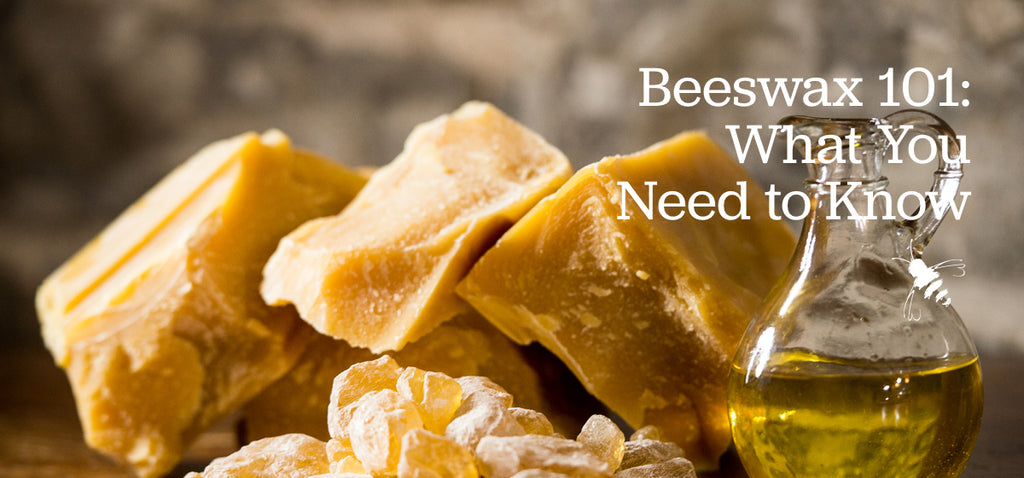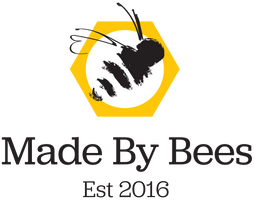
Products from the hive don't only include honey—others are beeswax, pollen, royal jelly, propolis and venom.
In this blog, we're covering:
- The beeswax basics
- How to process wax and what to make with it
- White wax and encaustic art
The Beeswax Basics
Beeswax is created by worker bees and is used to form cells in the hive.
Beeswax (cera alba) is a natural wax created by honey bees. The wax is formed by eight wax-producing glands in the abdominal of worker bees, who deposit it at the hive where the house bees mold it into the hexagonal shape.
How do bees make hexagons?
Honestly, scientists don't really know why it happens. But what we do know is that the bees seem to use their body heat to melt the wax from a circle shape into the hexagonal shape. This is a very calculated move on the bees’ part, because this shape takes up the least amount of space in the hive while also providing the most storage. Hexagons and honeycomb shapes are also useful for building things humans use as well, like bridges, airplanes, and cars.
Beeswax Characteristics
You may have noticed that beeswax can vary in shade, colour, and scent quite substantially. These variations depend on many factors including where the bees were foraging, what the wax was used for in the hive, and how long the wax was in the hive.
New beeswax, often used for cappings, is the lightest in colour. Exposure to pollen and honey can lead to darker, more golden beeswax. The 3 main types of beeswax are yellow, white, and absolute.

How to Process Wax and What to Make With It
The first step in processing wax is to remove the wax caps from the frames and strain the honey from the caps.
Cleaning, drying, heating, and cooling the caps are essential to processing wax. By heating and cooling the wax, impurities are separated and removed.
Beeswax has been used for thousands of years by cultures around the world for anything from cosmetics to candlemaking to waterproofing (just to name a few uses). Perhaps you've most commonly seen it used in candles, shampoo, food wraps, and moisturizers. Sure, we're biased, but our favourite product to make with beeswax is food wraps!
One thing is for certain: if you have beeswax, there's never a shortage of what you can make with it.
White Wax and Encaustic Art
Speaking of the endless possibilities with beeswax, it can even be used in painting!
The ancient Egyptians and Greeks used beeswax for many purposes, including a method of painting with pigment tinted beeswax called encaustic art. This technique is still used today by many artists and requires the use of pure white wax.
The wax that bees excrete is white, so there are no chemicals used to produce white wax. A special carbon filtering process is used to remove the colour from the pollen.
Check out this video by the Royal Academy of Arts to learn more about white wax and encaustic art.
And if you want your own white wax brick, you can purchase it here!

Comments
Martha Thimotheus :
Where can I buy Beeswax in Africa? South Africa have it? Or Namibia? Please I need this product. And I would like thank you for information.
Aug 19, 2024
Leave a comment